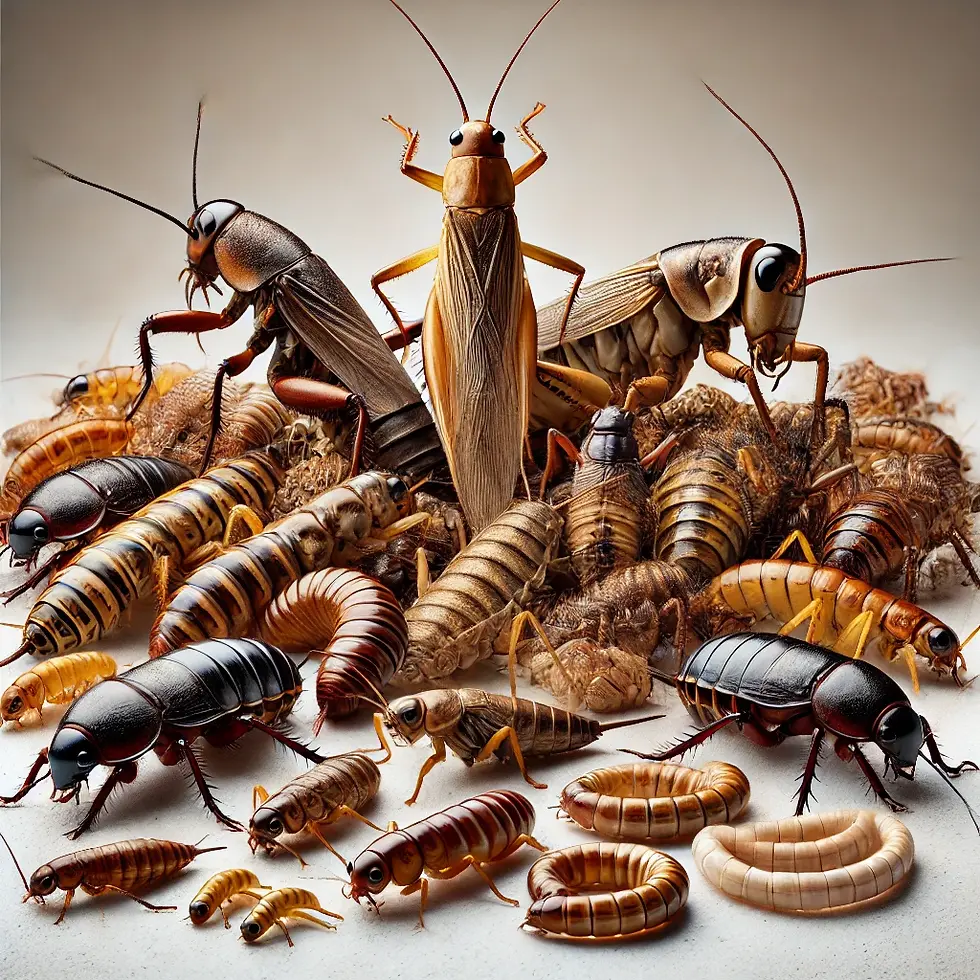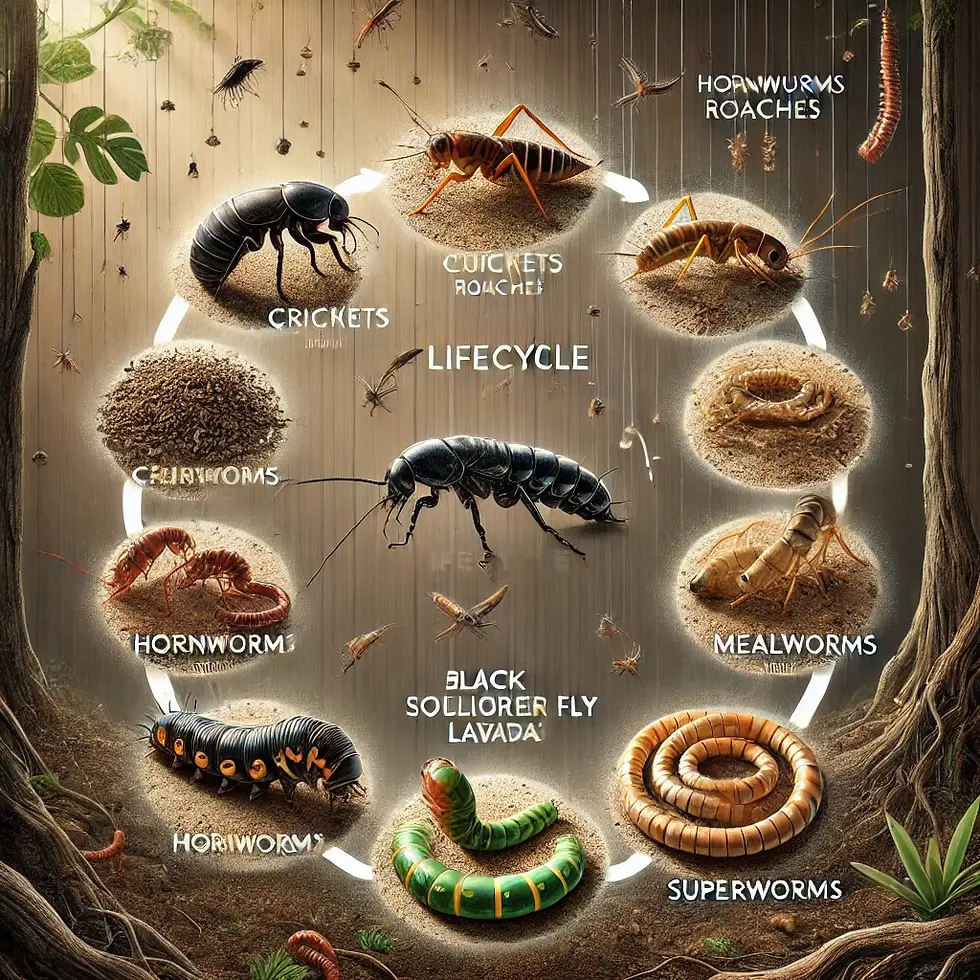Top Feeder Insects for Bearded Dragons
- Rigor Moe

- Jan 16
- 2 min read
Updated: Feb 19
Bearded dragons are omnivorous reptiles with diverse dietary needs. While they thrive on a combination of vegetables, fruits, and protein, feeder insects are a crucial part of their diet, especially for younger dragons that require higher protein intake. This guide highlights the best feeder insects for bearded dragons and their nutritional benefits.

1. Crickets
Crickets are one of the most commonly used feeder insects for bearded dragons due to their high protein content and availability.
Nutritional Value: High in protein and moderate in fat.
Benefits: Easy to find, affordable, and provide mental stimulation as dragons chase them.
Considerations: They can be noisy and may escape if not handled properly.
2. Dubia Roaches
Dubia roaches are highly nutritious and are becoming a favorite among reptile owners.
Nutritional Value: Excellent protein-to-fat ratio with high calcium levels.
Benefits: Quiet, easy to breed, and have a long shelf life.
Considerations: They require proper housing and may not be readily available in all areas.
3. Hornworms
Hornworms are an excellent source of hydration and nutrients.
Nutritional Value: High in water content and moderate in protein.
Benefits: Great for hydration and are highly palatable.
Considerations: They grow quickly and should be fed before reaching excessive sizes.
4. Superworms
Superworms are a popular choice for adult dragons due to their larger size.
Nutritional Value: High in protein and fat.
Benefits: Stimulating for dragons and easy to find in pet stores.
Considerations: High fat content makes them better as occasional treats rather than staples.
5. Mealworms
Mealworms are a commonly available feeder insect but should be used sparingly.
Nutritional Value: Low in calcium and high in fat.
Benefits: Affordable and widely available.
Considerations: Hard exoskeletons can be difficult for young dragons to digest.
6. Black Soldier Fly Larvae (BSFL)
Also known as Calciworms, BSFL are a nutrient-rich option.
Nutritional Value: High in calcium and protein.
Benefits: Excellent for bone health and require no gut-loading.
Considerations: They are small, so they are better suited for juvenile dragons or as supplements.
7. Silkworms
Silkworms are a soft-bodied, nutrient-dense option.
Nutritional Value: High in protein and low in fat.
Benefits: Easy to digest and provide essential nutrients.
Considerations: Require specific care and diet to thrive.
Feeding Tips
Gut-Loading: Always gut-load feeder insects 24-48 hours before feeding to ensure they are packed with nutrients.
Dusting with Supplements: Use calcium and multivitamin powders to boost nutritional content, especially for growing dragons.
Variety: Rotate between different insects to provide a balanced diet and prevent boredom.
Final Thoughts
Feeder insects play a vital role in maintaining the health and happiness of your bearded dragon. By understanding the benefits and limitations of each option, you can provide a diverse and nutritious diet tailored to your pet’s needs.
Have a favorite feeder insect that wasn’t mentioned? Share your recommendations in the comments below!
For more insights into bearded dragon care, check out related posts:
"Hydration Tips for Reptiles"
"The Lifecycle of Common Feeder Insects"






Comments